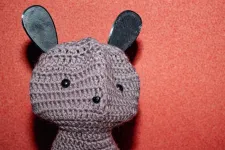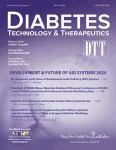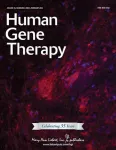(Press-News.org) AI holds the potential to revolutionize healthcare, but it also brings with it a significant challenge: bias. For instance, a dermatologist might use an AI-driven system to help identify suspicious moles. But what if the machine learning model was trained primarily on image data from lighter skin tones, and misses a common form of skin cancer on a darker-skinned patient?
This is a real-world problem. In 2021, researchers found that free image databases that could be used to train AI systems to diagnose skin cancer contain very few images of people with darker skin. It turns out, AI is only as good as its data, and biased data can lead to serious outcomes, including unnecessary surgery and even missing treatable cancers.
In a new paper published at the AAAI Conference on Artificial Intelligence this week, USC computer science researchers propose a novel approach to mitigate bias in machine learning model training, specifically in image generation.
The researchers used a family of algorithms, called “quality-diversity algorithms” or QD algorithms, to create diverse synthetic datasets that can strategically “plug the gaps” in real-world training data.
The paper, titled “Quality-Diversity Generative Sampling for Learning with Synthetic Data,” was lead-authored by Allen Chang, a senior double majoring in computer science and applied math, with co-authors doctoral student Matthew Fontaine, USC computer science Stefanos Nikolaidis, Fluor Early Career Chair in Engineering and Assistant Professor of Computer Science, Maja Matarić, Chan Soon-Shiong Chair and Distinguished Professor of Computer Science, Neuroscience, and Pediatrics, and Massachusetts Institute of Technology doctoral graduate Serena Booth.
“I think it is our responsibility as computer scientists to better protect all communities, including minority or less frequent groups, in the systems we design,” said Chang. “We hope that quality-diversity optimization can help to generate fair synthetic data for broad impacts in medical applications and other types of AI systems.”
Increasing fairness
While generative AI models have been used to create synthetic data in the past, “there’s a danger of producing biased data, which can further bias downstream models, creating a vicious cycle,” said Chang.
Quality diversity algorithms, on the other hand, are typically used to generate diverse solutions to a problem, for instance, helping robots explore unknown environments, or generating game levels in a video game. In this case, the algorithms were put to work in a new way: to solve the problem of creating diverse synthetic datasets.
Using this method, the team was able to generate a diverse dataset of around 50,000 images in 17 hours, around 20 times more efficiently than traditional methods of “rejection sampling,” said Chang. The team tested the dataset on up to four measures of diversity—skin tone, gender presentation, age, and hair length.
“We found that training data produced with our method has the potential to increase fairness in the machine learning model, increasing accuracy on faces with darker skin tones, while maintaining accuracy from training on additional data,” said Chang.
“This is a promising direction for augmenting models with bias-aware sampling, which we hope can help AI systems perform accurately for all users.”
Notably, the method increases the representation of intersectional groups—a term for groups with multiple identities—in the data. For instance, people who have both dark skin tones and wear eyeglasses, which would be especially limited traits in traditional real-world datasets.
"While there has been previous work on leveraging QD algorithms to generate diverse content, we show for the first time that generative models can use QD to repair biased classifiers," said Nikolaidis. "They do this by iteratively generating and rebalancing content across user-specified features, using the newly balanced content to improve classifier fairness. This work is a first step in the direction of enabling biased models to 'self-repair'' by iteratively generating and retraining on synthetic data."
END
Diversifying data to beat bias
USC researchers propose a novel approach to mitigate bias in machine learning model training
2024-02-23
ELSE PRESS RELEASES FROM THIS DATE:
Increased use of Paxlovid could cut hospitalizations, deaths and costs
2024-02-23
Increased use of Paxlovid, the antiviral drug used to treat COVID-19, could prevent hundreds of thousands of hospitalizations and save tens of billions of dollars a year, according to a new epidemiological model published by researchers at The University of Texas at Austin. In fact, epidemiologists found that treating even 20% of symptomatic cases would save lives and improve public health.
A 2023 National Institutes of Health study found that only about 15% of high-risk patients take Paxlovid when infected with COVID-19. Using a multiscale mathematical model based on ...
How to build your own robot friend: Making AI education more accessible
2024-02-23
From smart virtual assistants and self-driving cars to digital health and fraud prevention systems, AI technology is transforming almost every aspect of our daily lives—and education is no different. For all its promise, the rise of AI, like any new technology, raises some pressing ethical and equity questions.
How can we ensure that such a powerful tool can be accessed by all students regardless of background?
Inspired by this call to action, USC researchers have created a low-cost, accessible learning kit to help college and high school students build their own “robot friend.” Students can personalize the robot’s ...
Advances and future development of automated insulin delivery systems
2024-02-23
A special 13-article supplement to the peer-reviewed journal Diabetes Technology & Therapeutics (DTT) examines the “Development and Future of Automated Insulin Delivery (AID) Systems. Click here to read the supplement now.
Included in the supplement is the article titled “A Peek Under the Hood: Explaining the MiniMed™ 780G Algorithm with Meal Detection™ Technology", by Benyamin Grosman, PhD and his Medtronic algorithm team with co-authors Ohad Cohen, MD, and Robert Vigersky, MD, Chief Medical Officer at Medtronic. James Thrasher, MD “Early ...
Strategic grazing could boost conservation of ‘near-threatened’ sage-grouse
2024-02-23
RENO, Nev. – A multi-agency study, spearheaded by researchers from the University of Nevada, Reno’s College of Agriculture, Biotechnology & Natural Resources and the U.S. Department of Agriculture, underscores the impacts of strategic cattle grazing, particularly on restoring the declining population of the greater sage-grouse bird, a keystone species in the Great Basin region.
Amidst ongoing decline, the U.S. Fish and Wildlife Service acted by listing the sage-grouse for protection under the Endangered Species Act in 2011. This move prompted the Bureau of Land Management to develop a federal conservation plan for the species ...
Complement system response to AAV vector gene therapy
2024-02-23
Recent clinical trials utilizing high doses of adeno-associated virus (AAV) vectors have highlighted a new challenge to AAV gene transfer – activation of the complement system. A new article in the peer-reviewed journal Human Gene Therapy describes how a convergence of AAV-specific, environmental, and patient-specific factors shaping complement responses likely contribute to differential outcomes seen in clinical trials. Click here to read the article now.
Complement responses may contribute to priming of the adaptive immune system or serious adverse events ...
Study suggests people in urban areas with more green space have better mental health
2024-02-23
By Ann Kellett, Texas A&M University School of Public Health
A new study from the Texas A&M University School of Public Health suggests that city dwellers who have more exposure to urban green spaces require fewer mental health services.
The study, published in the International Journal of Environmental Research and Public Health, was conducted by Jay Maddock, Ph.D., Regents Professor of environmental and occupational health at Texas A&M, and colleagues from the Center ...
Zinc discovery holds promise for people with cystic fibrosis
2024-02-23
University of Queensland researchers have identified an opportunity to reduce infections in people living with cystic fibrosis.
Professor Matt Sweet, Dr Kaustav Das Gupta and Dr James Curson from UQ’s Institute for Molecular Bioscience have discovered a fault in the bacteria-killing function of immune cells in people with CF and a potential way to get around it.
CF is a chronic disease in which defects in the CFTR (cystic fibrosis transmembrane conductance regulator) channel cause a build-up of mucus in the lungs, airways and digestive system, leading to ...
Study finds black children in UK at four times greater risk of complications following emergency appendicitis surgery compared with white children
2024-02-23
New research published in Anaesthesia (the journal of the Association of Anaesthetists) shows that for children undergoing emergency surgery for appendicitis in the UK, black children had a four times greater risk of postoperative complications compared with white children. The study was led by Dr Amaki Sogbodjor, from Great Ormond Street Hospital and University College London (UCL), and Professor Ramani Moonesinghe, UCL Division of Surgery and Interventional Science, London, UK and Director, Central London National ...
Webb finds evidence for neutron star at heart of young supernova remnant
2024-02-22
NASA’s James Webb Space Telescope has found the best evidence yet for emission from a neutron star at the site of a recently observed supernova. The supernova, known as SN 1987A, was a core-collapse supernova, meaning the compacted remains at its core formed either a neutron star or a black hole. Evidence for such a compact object has long been sought, and while indirect evidence for the presence of a neutron star has previously been found, this is the first time that the effects of high-energy ...
Study finds guided parent-child discussions are effective at addressing subtle racism
2024-02-22
Study finds guided parent-child discussions are effective at addressing subtle racism
When parents discuss racism with their children, negative biases toward Black people are significantly reduced in both parent and child
EVANSTON, Ill. --- Experts have long pointed out the need for white parents to have conversations that directly address racism with their children to reduce racial bias. But many parents fail to have these crucial discussions.
Psychology researchers at Northwestern University have published ...
LAST 30 PRESS RELEASES:
Tracing the quick synthesis of an industrially important catalyst
New software sheds light on cancer’s hidden genetic networks
UT Health San Antonio awarded $3 million in CPRIT grants to bolster cancer research and prevention efforts in South Texas
Third symposium spotlights global challenge of new contaminants in China’s fight against pollution
From straw to soil harmony: International team reveals how biochar supercharges carbon-smart farming
Myeloma: How AI is redrawing the map of cancer care
Manhattan E. Charurat, Ph.D., MHS invested as the Homer and Martha Gudelsky Distinguished Professor in Medicine at the University of Maryland School of Medicine
Insilico Medicine’s Pharma.AI Q4 Winter Launch Recap: Revolutionizing drug discovery with cutting-edge AI innovations, accelerating the path to pharmaceutical superintelligence
Nanoplastics have diet-dependent impacts on digestive system health
Brain neuron death occurs throughout life and increases with age, a natural human protein drug may halt neuron death in Alzheimer’s disease
SPIE and CLP announce the recipients of the 2025 Advanced Photonics Young Innovator Award
Lessons from the Caldor Fire’s Christmas Valley ‘Miracle’
Ant societies rose by trading individual protection for collective power
Research reveals how ancient viral DNA shapes early embryonic development
A molecular gatekeeper that controls protein synthesis
New ‘cloaking device’ concept to shield sensitive tech from magnetic fields
Researchers show impact of mountain building and climate change on alpine biodiversity
Study models the transition from Neanderthals to modern humans in Europe
University of Phoenix College of Doctoral Studies releases white paper on AI-driven skilling to reduce burnout and restore worker autonomy
AIs fail at the game of visual “telephone”
The levers for a sustainable food system
Potential changes in US homelessness by ending federal support for housing first programs
Vulnerability of large language models to prompt injection when providing medical advice
Researchers develop new system for high-energy-density, long-life, multi-electron transfer bromine-based flow batteries
Ending federal support for housing first programs could increase U.S. homelessness by 5% in one year, new JAMA study finds
New research uncovers molecular ‘safety switch’ shielding cancers from immune attack
Bacteria resisting viral infection can still sink carbon to ocean floor
Younger biological age may increase depression risk in older women during COVID-19
Bharat Innovates 2026 National Basecamp Showcases India’s Most Promising Deep-Tech Ventures
Here’s what determines whether your income level rises or falls
[Press-News.org] Diversifying data to beat biasUSC researchers propose a novel approach to mitigate bias in machine learning model training





